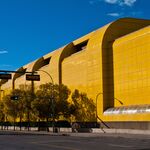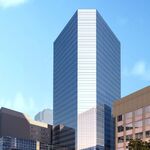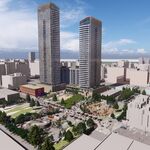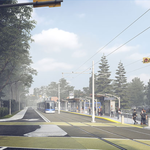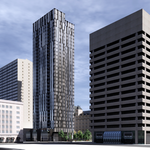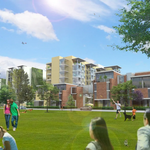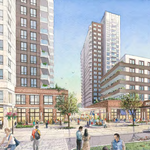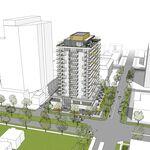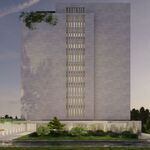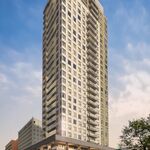While the CN Tower is a local landmark and one of Canada's most iconic examples of International Style architecture, its historic construction necessitated the displacement of the Grecian Doric Canadian National Railway (CNR) Station. A bittersweet symbol of Edmonton's status as a railway hub, work on the 26-storey tower would only begin after its grand predecessor, an addition to the 1905-built station one block west, was completely demolished.
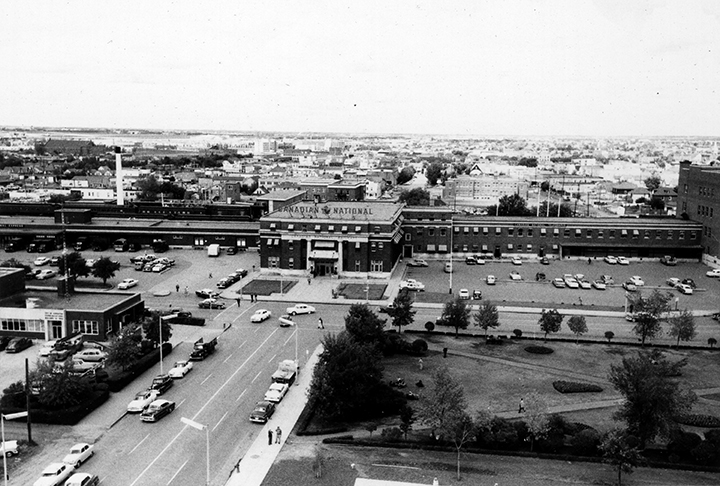 Looking north along 100 Street NW in 1957, image by City of Edmonton Archives EA-772-21
Looking north along 100 Street NW in 1957, image by City of Edmonton Archives EA-772-21
In 1928, the CNR built a railway depot at the foot of 100 Street that expanded the company's already conspicuous presence in the area. It opened on St. Patrick's Day to an assembled crowd of thousands who had filled the rotunda for an evening celebratory dance. With big and bold 'CANADIAN NATIONAL' signage topping the red corduroy brick and Tyndall Manitoba stone of the exterior, the event was as much an appreciation of the building as it was the strength of the industry it came to represent.
 A postcard showing the pitched roof of the 1905 station (left) and the 1928 building (centre), University of Alberta Libraries
A postcard showing the pitched roof of the 1905 station (left) and the 1928 building (centre), University of Alberta Libraries
A central two-storey-high waiting room outfitted with skylights greeted newcomers to the stately structure, which also housed a dining room, 40-person restaurant, and smoking room. The interiors were ornately accented with quarter-cut oak and fir millwork, while the floor was patterned in alternating light and dark terrazzo marble tiles.
The building would anchor the north end of 100 Street as a terminating vista, while the châteauesque Hotel MacDonald, another CNR landmark, performed as the southern terminus. CNR architect John Schofield configured the building in such a way as to allow future expansion, and by 1951, renovations had been initiated to create a third storey, a two-storey east wing, and new terminal sheds. The old 1905 station was deemed surplus and torn down in 1953.
 The CN Tower today, image retrieved from Google Street View
The CN Tower today, image retrieved from Google Street View
The drawing of plans for a skyscraping replacement structure marked the turning point for the site. The CN Tower would finish construction in 1966, becoming the tallest building in Western Canada. Just two years later, CN announced plans for a massive downtown redevelopment that proposed multiple buildings along 104 Avenue. Among them was a 240-metre "pylon" building, which would have floors of office space assembled as needed. The plans obviously never materialized, and the yards would function until 1988, with the last remaining freight sheds demolished in 1996. The passenger railway station housed in the basement would remain in service until 1998, when the tracks leading to Downtown Edmonton were removed.
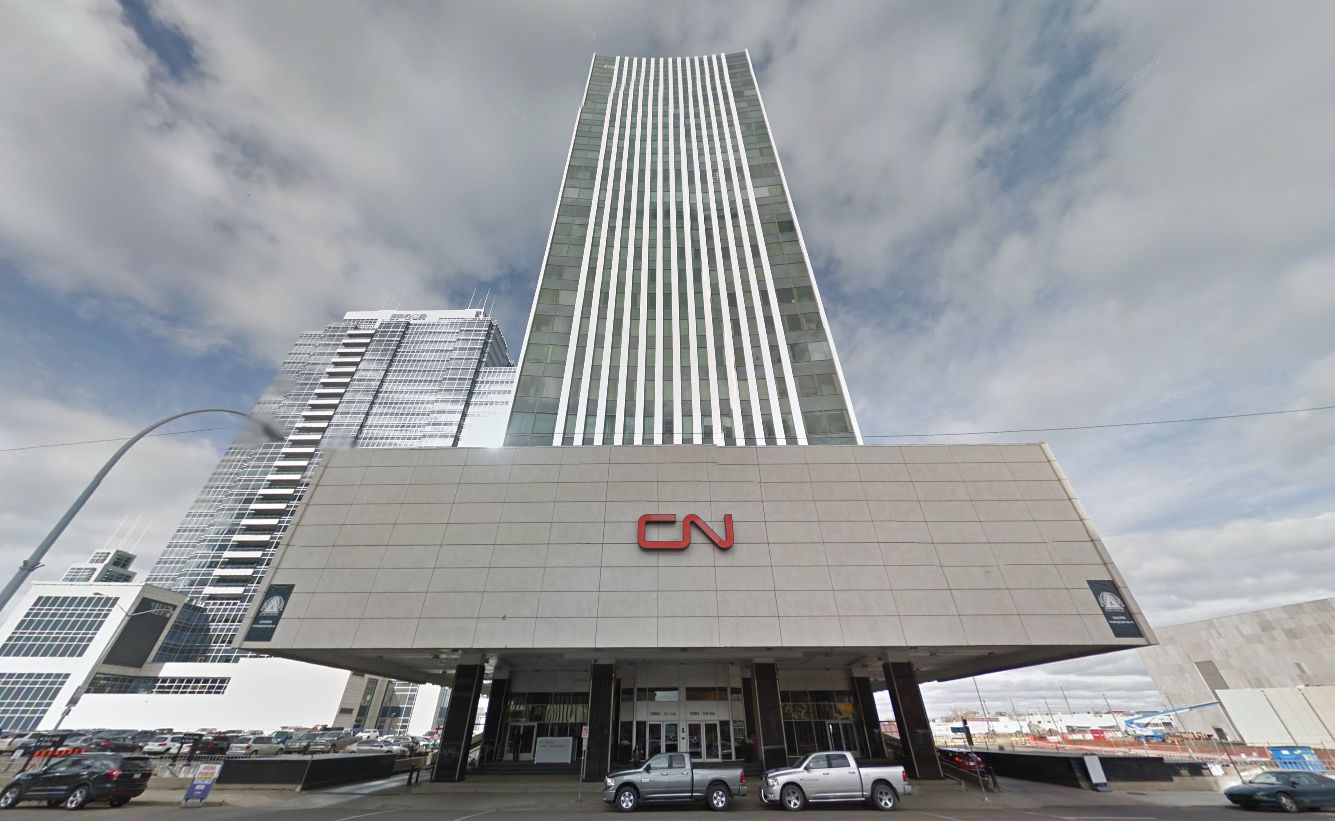 Looking up at the CN Tower, image retrieved from Google Street View
Looking up at the CN Tower, image retrieved from Google Street View
CN would vacate the premises in 2008, abandoning the stronghold the historic company once had on the area. The striking red 'CN' letters of their logo, surviving relics of the past, continue to sandwich the vertical lines of the building. As for what the future of the site holds, redevelopment plans could possibly convert the office tower into a multitude of uses, including residential and retail.
Have an idea for a future Throwback Thursday? Let us know by leaving a comment below!

 7.7K
7.7K 














